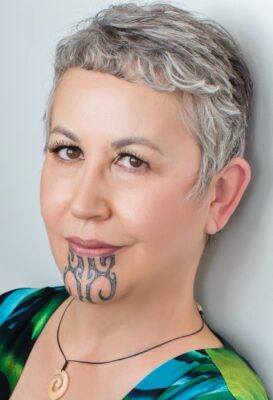Around the motu (country), universities (and other sectors) are coming under increasing pressure from central agencies to include the use of te reo Māori in the everyday life and core business of the institution, as a matter of compliance. For the universities, this is a radical departure from past practice, which has tended towards the emblematic inclusion of Māori language and culture, while maintaining a monolingual English working environment. English-only policies for tertiary education websites and documentation have presumably reflected business priorities in an international education market. Outside of departments of Māori Studies and a few small programmes of Māori-medium teacher education and arts, te reo Māori has been kept out of everyday levels of usage in universities and all tertiary education, including policy documents and websites, despite being an official national language for 35 years. This situation of monolingualism is in a state of flux and rapid change, and this column looks at what lies beneath these changes.
Giving things Māori names is a popular way to signal support for te reo Māori and has gone on for decades in Aotearoa New Zealand. Bilingual signage around a campus is a powerful way to display (and claim) a culture inclusive of Māori, but what is actually being claimed, and does it reflect what happens to Māori staff and students in their everyday and overall experience? These are complex and difficult questions, which this column can raise, but cannot answer.
A common narrative is told by Pākehā about being ‘gifted’ a Māori name for their department, degree, building, room, etc., by someone deemed to be appropriate. In the world of written text, where academic work is conducted, bilingual headings for the sections of a document or website are relatively easy to organise and are now considered necessary to remain competitive with other national universities. Based on principles of new public management and related economic doctrines, which have gradually diffused throughout universities over the past 30 years or so, these real-world examples show how ‘technical’ solutions are being adopted for deeply complex sociolinguistic questions of multiculturalism and te reo Māori.
To translate main headings and signs into te reo and give various parts of the university Māori names are doable actions that may be confused with real cultural change, which involves power-sharing and is far more difficult to achieve. Real change requires long-term, substantial investment and commitment from leadership down and across the institution towards difficult learnings and change. Yet Māori educational equity programmes usually attract short-term funding, with expectations for rapid, measurable results, and all-too-often rely on appointing a few low-level people in a ‘bolt-on’ manner, from the perspective of the whole institution.
Leading New Zealand linguist of te reo Māori, Ray Harlow, published an interesting paper on contradictory, covert attitudes and beliefs about te reo Māori in society, where he discussed the practice of giving organisations Māori names. Harlow was a member of the Māori Language Commission and remarked on working on a ‘list of Māori designations of a great many institutions’ (p. 143) as a basic step in the Commission’s aim to provide for a te reo practice across the public sector. ‘In general, the terms are clear and short, stating succinctly in Māori what the particular ministry, agency, organisation is’ (p. 143).
Harlow proceeds to describe a second approach that he sees as treating ‘Māori names as logos’ rather than for use in ‘normal discourse conducted in Māori’ (p. 144). This second approach is to ‘find a name which is opaque and metaphorical and does not by itself reveal anything about the nature of the organisation’ (p. 144), so that one needs to know the English name as well. He gives an example:
Some years ago, I was asked for advice on a Māori name for the Southland Museum. On suggesting te Whare Taonga o Murihiku, I was told that would not do, the Māori name had to be poetic. (p. 144)
Harlow is reflecting on the nature of a name, evoking the Shakespearean sonnet borrowed in our title – ‘a rose by any other name would smell as sweet.’ Here, Harlow is reflecting in particular on the purpose of an institutional name. Adopting short, descriptive Māori names for university purposes supports the use of those names when speaking te reo, yet a drift towards opaque Māori names is clear in the current milieu. Obscure Māori names are sometimes promulgated as ‘more authentic,’ allowing those involved to feel that they are ‘making progress’ – so for example, a university library might ‘refresh’ its image and update its name, as happened recently at AUT, going from the well-known Māori word for library, Te Whare Pukapuka, to the more ‘opaque and metaphorical’ name, Te Mātāpuna (the source). Harlow’s point is this approach makes the Māori name more dependent on English, not less; more like an ornamental flourish than a working name. The impression of progress is merely symbolic, incapable of effecting educational equity for Māori learners.
The New Zealand Curriculum is currently under refresh, and it is clear that, afterwards, it will have a much more Māori face in terms of imagery and language. But it is seldom acknowledged that, like signage and Māori names, it is relatively straightforward to write curriculum documents in te reo, centred as they are on short achievement objectives, arranged in a logical framework for the purposes of teaching and assessment. Ideally, a curriculum document builds on existing practice in communities of teachers and learners and their social contexts. In the case of Māori medium education, however, curriculum development has been pressure-cooked, far in advance of classroom practice, and nowhere more so than in subject Pūtaiao (Māori-medium Science) for several complex reasons.
The Ministry appears to have both a remit and an obligation to lead the way with the institutional use of te reo. The remit might be assessed in terms of achieving its goals of dialling up the inclusion of te reo Māori in English-medium education. In terms of obligation, this dialling up offers an opportunity for a deeper understanding of the enduring challenges of governmental intentions and outcomes. These challenges can be seen in the curriculum refresh. The Ministry opens its online curriculum refresh ‘one-stop shop’ with a whakataukī (proverbial saying):
Mā te huruhuru ka rere te manu
Adorn the bird with feathers so it may soar
But deeper levels of meaning emerge in the full form of this whakataukī:
He ao te rangi e ūhia, mā te huruhuru te manu e rere
As the sky is filled with clouds, a bird’s feathers enable it to fly
This extended form refers to the right time to do something risky, and something like ‘an army marches on its stomach’ since only if a bird is covered with feathers (unplucked) can it fly. The version used on the Ministry website is a well-known ‘modern’ usage, hence perhaps particularly suitable to introduce the refreshed curriculum in 2023. The point is not about which version of this ancient text is right and the other wrong. More importantly, this example points to the non-standardised nature of Māori knowledge, in which multiple versions and interpretations can co-exist and each be correct in their own way. The lack of standardisation of Māori knowledge is an essential aspect of its nature but seems in conflict with its use in a curriculum that emphasises aspirations for consensus on what knowledge counts and clarity about how to assess it.
In 2022, the Ministry ran an online session for initial teacher education providers, in which their slides featured (without comment) one of the most famous photographs in national history: the image of elder Dame Whina Cooper holding the hand of a small child, walking away from the camera up an unformed road, with no other people in sight. Most people over 40 who grew up in this country would instantly recognise this image of the historic Land March of 1975, which has become iconic in our national history. The use of this image is significant and provokes our reflection, extending our talk on Saturday, 10 December 2022, at the 50th PESA Conference in Sydney, Australia.
What (educational) conversations occurred in determining the choice of this image as a background to slides about the intentions of the curriculum refresh? For the second author, seeing this image used like this felt like the Ministry was claiming, while obliterating, the image and its pre-existing ethical density of meaning for the majority of classroom teachers, who genuinely desire to work towards overcoming inequities and enhancing social justice. For the Ministry of Education not to acknowledge the story and history of that historic Whina image – not to recognise its own historical complicity in the obstruction of Māori rights to land and language – serves notice that contemporary, as well as historical, complicity is at work. The Whina-and-mokopuna image is a ‘meme’ in the highest sense – one of those rare images that capture the spirit of a generation – in this case, a generation who came of age in the days of Bastion Point in 1979 and the Springbok rugby tour in 1981, when many Pākehā/Kiwi people grasped the link between apartheid in South Africa, and the treatment of Māori at home.
Our opening phrase ‘around the motu’ entered the Kiwi lexicon thanks to then-National Director of Health, Dr Ashley Bloomfield, who became an unlikely celebrity hero during the COVID-19 pandemic, in part via daily televised noon briefings. Seemingly unscripted and unpretentious, this easy, inclusive phrase is an example of how te reo and te ao Māori find their way into national discourse. What is certain is that the ‘refreshed’ New Zealand Curriculum – given the name Te Mātaiaho – is not a minor renovation but more like a complete rebuild. How it will land in the sector is, for now, still a matter of speculation. The older form of the whakataukī may indeed be relevant: if the timing is right, and we are well prepared, we will succeed in our audacious endeavours.





